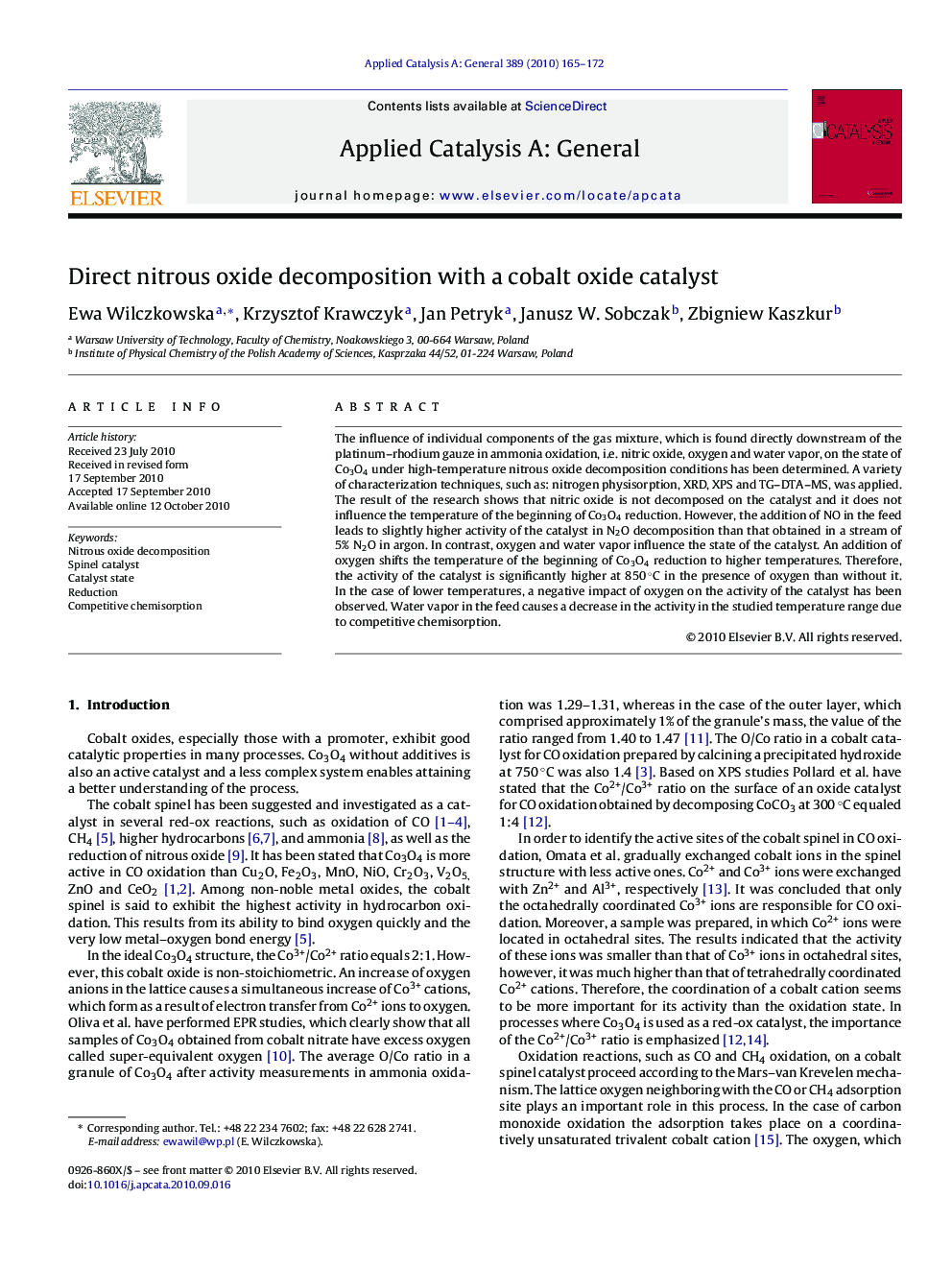| Article ID | Journal | Published Year | Pages | File Type |
|---|---|---|---|---|
| 41893 | Applied Catalysis A: General | 2010 | 8 Pages |
The influence of individual components of the gas mixture, which is found directly downstream of the platinum–rhodium gauze in ammonia oxidation, i.e. nitric oxide, oxygen and water vapor, on the state of Co3O4 under high-temperature nitrous oxide decomposition conditions has been determined. A variety of characterization techniques, such as: nitrogen physisorption, XRD, XPS and TG–DTA–MS, was applied. The result of the research shows that nitric oxide is not decomposed on the catalyst and it does not influence the temperature of the beginning of Co3O4 reduction. However, the addition of NO in the feed leads to slightly higher activity of the catalyst in N2O decomposition than that obtained in a stream of 5% N2O in argon. In contrast, oxygen and water vapor influence the state of the catalyst. An addition of oxygen shifts the temperature of the beginning of Co3O4 reduction to higher temperatures. Therefore, the activity of the catalyst is significantly higher at 850 °C in the presence of oxygen than without it. In the case of lower temperatures, a negative impact of oxygen on the activity of the catalyst has been observed. Water vapor in the feed causes a decrease in the activity in the studied temperature range due to competitive chemisorption.
Graphical abstractFigure optionsDownload full-size imageDownload high-quality image (33 K)Download as PowerPoint slideResearch highlights▶ Feed components influence N2O decomposition on Co3O4. ▶ Nitric oxide does not affect the catalyst state, but the reaction pathway. ▶ Water blocks the surface of Co3O4 reducing the number of available active sites. ▶ Oxygen increases the active phase content in the catalyst at 850 °C.
